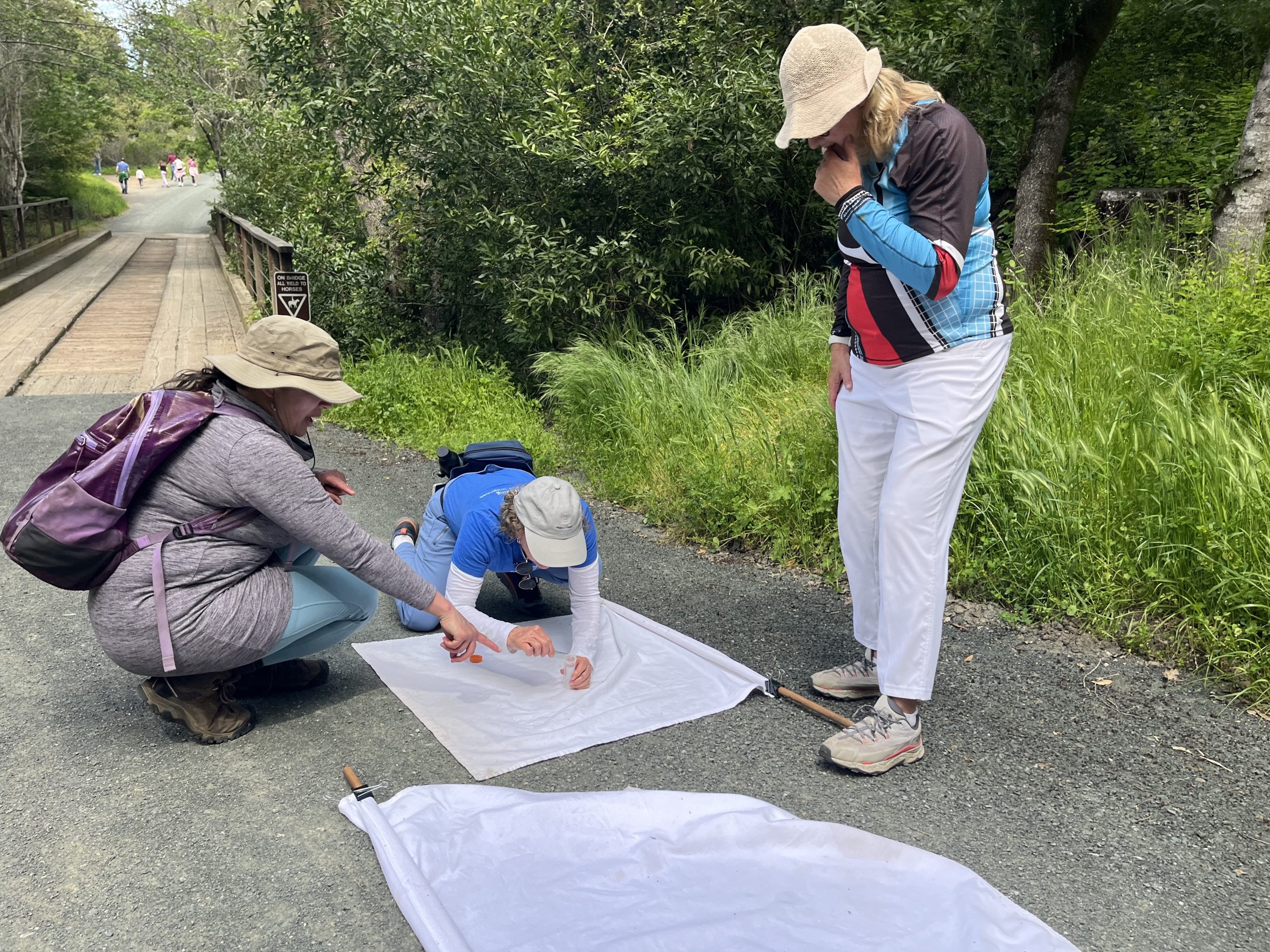
Due to climate change, more ticks are migrating to the north, including species that are not native to California. The Bay Area Lyme Foundation, based in Portola Valley, is funding a study at the University of California, Davis, that is looking into whether Lone Star ticks can invade the state.
So far, the species native to Texas has not been found in San Mateo County, but experts say that locals should still be wary of more common ticks while hiking. The Lone Star tick is commonly found in southern and eastern regions of the United States but was recently found in Mendocino in 2018 — the first known report of the tick in California. This species is known for causing Alpha-gal syndrome which can develop into a red meat allergy in humans.
“There’s a lot of movement of people, pets and even livestock coming into our state. California is an agricultural state. We have a lot of military personnel come in. There’s all these different ways that Lone Start ticks as well as other ticks might be moving from other regions,” said Francesca Rubino, post-doctoral researcher at UC Davis.
Ticks thrive in warm and moist environments, such as woodlands along San Francisco and Marin counties. In Portola Valley, researchers ventured into the tall grasses of the Windy Hill Open Space Reserve to search for ticks.
By sweeping large white flags along the grass, researchers caught over a dozen of what they suspect are western blacklegged ticks or American dog ticks, the most common species found in San Mateo County.
Researchers said dogs and children are most at risk or getting bit from grazing the grass on the side of hiking trails.
The movement of the flag mimics the motions of a human or animal brushing up on the vegetation, which is when ticks will grab on for a meal. After sweeping the flag, researchers carefully looked for any ticks on the white fabric and placed them into a test tube, which will be taken back to UC Davis for research.
Tick season typically slows down in the dry seasons of summer and fall, but as the rainy season falls into later months of spring, tick season in California is all year round, said Bonnie Crater, cofounder of the Bay Area Lyme Foundation.
Warmer and wetter climates are allowing ticks to migrate and spread across the United States, leading to “more and more people getting tick borne diseases,” Crater added. Since the 1990s, the number of people who have been diagnosed with Lyme Disease has quadrupled, she said.
Dangers of ticks

The bloodsucking arachnids are known for transmitting various diseases such as Lyme disease, tularemia and Rickettsial diseases. The western black-legged tick is a primary vector of Lyme disease to humans in California, according to the San Mateo County Mosquoito and Vector Control District.
The U.S. Centers for Disease Control and Prevention estimates that nearly half a million people contract Lyme disease every year. Although the disease is more commonly spread in the northeastern states, the potential of contracting Lyme Disease in the western states is still high, Crater said.
“Awareness is important,” she added.
Crater explained that when an infected tick bites onto a host, not only is it feeding on the blood, it is also using a pumping action to push its own saliva into the host, transmitting the disease. Tick bites are usually painless, so many don’t know when they’ve been bit.
The Bay Area Lyme Foundation was founded in 2012 by Crater and Laure Woods, Portola Valley locals. They both had friends and family members who were struggling with debilitating cases of Lyme disease.
Crater said the foundation was created to make the disease easy to diagnose, treat and cure. Currently, the only treatment for Lyme disease is antibiotics, but those who deal with the chronic Lyme Disease can struggle with severe symptoms of brain fog, arthritis, heart palpitations and facial paralysis for a prolonged duration.
“If we can understand the ecology of ticks, we can help more people,” Crater said.
The foundation has funded dozens of studies on ticks and Lyme Disease across the nation and has partnered with various organizations to further research treatment and impacts of tick borne diseases.
How to stay safe from ticks
Ticks are miniscule, making them very difficult to spot. After spending time outdoors, experts recommend doing a thorough tick check.
The San Mateo County Mosquito and Vector Control District suggests looking in dark, moist areas of the body such as behind the knees, groin, under arms, scalp, behind ears and under waistbands.
Crater said her routine involves putting her worn clothes into the dryer, to kill any ticks and then taking a shower. She also recommends using a tick repellent before going outdoors. Crater personally wears lighter colored clothing to make it easier to spot the ticks on herself.
If a tick is found on a host, it should be removed by using tweezers, tissue or a tick removal tool to grab it as close to the surface of the skin as possible and pull away steadily, according to the county vector control district. Individuals should also wash the area with soap and water or a disinfectant solution after removal.
If there is a concern about whether the tick carries any diseases, it can be collected dead or alive, to be tested, according to the Bay Area Lyme Foundation. After getting the tick tested, you can take the results to a health professional, so you know what to get tested and treated for. The organization has a list of organizations that community members can send their tick to as well as other resources on its website, bayarealyme.org.
The San Mateo County Mosquito and Vector Control District also has a program that provides San Mateo County residents with free tick-bite prevention kits with information and resources about reducing the risk of a tick-bite. For more information visit https://www.smcmvcd.org/tick-bite-prevention-kit.

